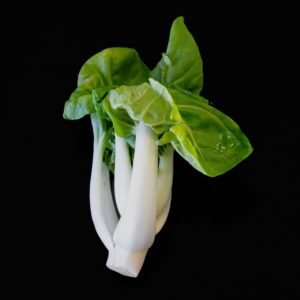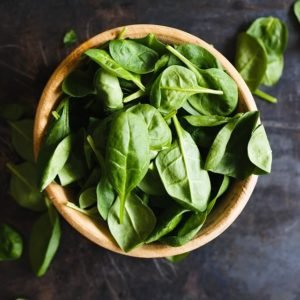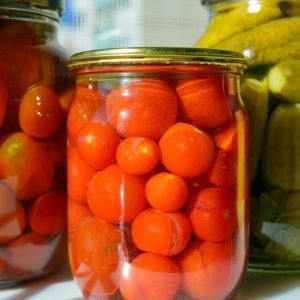Vitamin B6 – Top 12 Food Sources, Recommended Intake, and the Dangers & Side Effects of Overconsumption

Vitamin B6 in Focus - FooDosage Nutrition Calculator
Vitamin B6 is a water-soluble vitamin in the B series, essential for protein metabolism and plays a role in carbohydrate and fat metabolism, cognitive development, maintaining normal levels of homocysteine (an amino acid) in the blood, immune function, and hemoglobin formation.
Increased/supplemental Vitamin B6 intake has been hypothesized to have the following additional health benefits, but further study is needed to confirm them: Reducing the risk of cardiovascular disease and certain types of cancer, maintaining cognitive function in old age, reducing the symptoms of premenstrual syndrome (PMS), reducing nausea and vomiting during pregnancy.
Being water-soluble, it is stored in the liver and heart in small quantities, but excess amounts will be expelled quickly. This means we need an adequate, ongoing (daily) supply to keep B6 levels in the optimal range.
This article will cover the recommended intake levels, why we want to reach those levels, the dangers of overconsumption, and which foods are richest in Vitamin B6. As a twist, we sort foods by their nutrient to calorie ratios, as opposed to the more common per 100 gram values. This is because per calorie values correct for water content, and satiation, but more on that later.
Note that all recommended intake figures below are based on the needs of a 31 year old non-pregnant, non-lactating woman on a 2000 kilocalorie diet. Your personal requirements may differ (wildly). One way to figure out your individual needs, including calories per day, is the FooDosage Nutrition Calculator. It's free, by the way.
Recommended Vitamin B6 Intake
The recommended intake range for Vitamin B6, as set by the National Academy of Sciences:Recommended minimum intake (RDA): 1.3 mg per day
Upper limit: 100 mg
"No adverse effects associated with Vitamin B6 from food have been reported. This does not mean that there is no potential for adverse effects resulting from high intakes. Because data on the adverse effects of Vitamin B6 are limited, caution may be warranted."
In other words: Any amount of Vitamin B6 you can get from food sources is probably fine, but don't overdo it with supplements.
Note that your personal requirements may differ depending on your age, sex, pregnancy-, and lactation status.
Importance of an Adequate Vitamin B6 Intake (Dangers of a Deficiency)
Isolated Vitamin B6 deficiencies are rare, and are usually accompanied by deficiencies of other B-complex vitamins such as B12. Symptoms may include:
- Microcytic anemia
- Electroencephalographic abnormalities
- Dermatitis with cheilosis (scaling on the lips and cracks at the corners of the mouth)
- Glossitis (swollen tongue)
- Depression and confusion
- Weakened immune function
Risks of an Excessive Vitamin B6 Consumption (Side Effects)
As a water-soluble vitamin, excess B6 is usually expelled without complication. As opposed to fat soluble vitamins, liver toxicity is not a danger.There is no evidence of adverse effects from the consumption of naturally occurring Vitamin B6 in foods. There are however side effects associated with a long term excessive consumption of B6 supplements:
- Severe and progressive sensory neuropathy characterized by ataxia (loss of control of bodily movements). The severity of the condition appears to be relative to the dosage and symptoms appear to be reversed by discontinuation of supplementation as soon as they appear.
- Painful, disfiguring dermatological lesions
- Photosensitivity
- Gastrointestinal symptoms, such as nausea and heartburn
Top 12 Vitamin B6 Food Sources
The highest concentrations of Vitamin B6 are usually found in certain vegetables and fruit, fish, meats, organ meats such as liver, whole grains, and nuts & seeds.Some choice examples of Vitamin B6 rich foods:

Vitamin B6 Leaderboard – FooDosage Nutrition Calculator
Note that for this ranking, the foods were sorted by their nutrient/calorie contents, as opposed to the more common nutrient/gram sorting method. This is because per calorie values correct for water content, and satiation. Example: Butter may contain more Vitamin A than Spinach per 100 grams, but eating the 120 grams of spinach necessary to reach the minimum recommended amount of Vitamin A is by far more feasible (and recommendable) than to eat the 100 grams of butter required for the same amount of Vitamin A.
Drumstick (Moringa) Leaves
Vitamin B6 per 100g (boiled): 0.93 mg (71% of recommended minimum intake.)Vitamin B6 per 100 kcal: 1.55 mg (Corrects for water content and satiation.)
Calories per 100g: 60 kcal
Not exactly a widely available staple food, drumstick (moringa) leaves are certainly nutrient packed. Most commonly, they can be bought in powdered form, as a natural multivitamin. At 5 grams per hundred (cooked), they also contain a good amount of complete protein, considering the low calorie count of 60 per 100 grams.
Moringa leaves are also an excellent source of:
- Vitamin K – at 108 µg / 100g (120% of RMI)
- Vitamin A – at 351 µg / 100g (50% of RMI)
- Manganese – at 0.87 mg / 100g (48% of RMI)
- Riboflavin (B2) – at 0.51 mg / 100 g (42% of RMI)
- Vitamin C – at 31 mg / 100g (41% of RMI)
Pak Choi (Chinese Cabbage)
Vitamin B6 per 100g (boiled): 0.17 mg (13% of recommended minimum intake.)
Vitamin B6 per 100 kcal: 1.38 mg (Corrects for water content and satiation.)
Calories per 100g: 12 kcal
Delicious in stir fries and soups, this mild cabbage almost reminds us of spinach in taste and is rich in some nutrients such as Vitamin B6, considering the very low calorie count. Also known as bok choi, horse's ear, and mustard cabbage.
Pak Choi is also a great source of:
- Vitmain K – at 34 µg / 100 g (38% of RMI)
- Vitamin C – at 26 mg / 100g (35% of RMI)
- Vitamin A – at 212 µg / 100 g (30% of RMI)
- Folate (B9) – at 41 µg / 100 g (10% of RMI)
Spinach
Vitamin B6 per 100g (boiled): 0.24 mg (19% of recommended minimum intake.)Vitamin B6 per 100 kcal: 1.05 mg (Corrects for water content and satiation.)
Calories per 100g: 23 kcal
With its low calorie content and very high relative nutrient contents, spinach has already appeared many times in our lists and probably will many more. It's truly one of the healthiest foods out there. Stay tuned, we’ll probably feature Spinach in a “leading the charts” article soon.
Spinach is also an excellent source of:
- Vitamin K – at 493 µg / 100g (548% of RMI)
- Vitamin A – at 524 µg / 100g (75% of RMI)
- Manganese – at 0.94 mg / 100g (52% of RMI)
- Folate (B9) – at 146 µg / 100g (37% of RMI)
- Magnesium – at 87 mg / 100g (27% of RMI)
Okra
Vitamin B6 per 100g (boiled): 0.19 mg (14% of recommended minimum intake.)Vitamin B6 per 100 kcal: 0.850 mg (Corrects for water content and satiation.)
Calories per 100g: 22 kcal
Okra may not exactly be the most exciting of veggies, but they do help with achieving our daily B6 levels and are rich in other nutrients as well. Well featured in many southern recipes, the mild tasting okra benefits from strong/hot spices. Prepare for a slimy texture when cooked. Also known as bhindi or lady's fingers.
Okra is also a good source of:
- Vitamin K – at 40 µg / 100g (44% of RMI)
- Vitamin C – at 16.3 mg / 100g (22% of RMI)
- Manganese – at 0.29 mg / 100g (16% of RMI)
Garlic
Vitamin B6 per 100g (raw): 1.24 mg (95% of recommended minimum intake.)Vitamin B6 per 100 kcal: 0.83 mg (Corrects for water content and satiation.)
Calories per 100g: 149 kcal
Granted, if you value your social life, you probably will not be eating high enough amounts of garlic to put more than a dent in your daily nutrient requirements. Nevertheless, it should be mentioned how rich garlic is in various nutrients, B6 among them. It is also rich in antioxidants, has antiseptic properties and numerous other health benefits. No wonder then, that garlic has been a component of many traditional medicines for thousands of years.
Garlic is also a great source of:
- Manganese – at 1.67 mg / 100g (93% of RMI)
- Vitamin C – at 31.2 mg / 100g (42% of RMI)
- Copper – at 0.3 mg / 100g (33% of RMI)
- Selenium – at 14.2 µg / 100 g (26% of RMI)
- Phosphorus – at 153 mg / 100g (22% of RMI)
Bamboo Shoots
Vitamin B6 per 100g (boiled): 0.1 mg (8% of recommended minimum intake.)Vitamin B6 per 100 kcal: 0.82 mg (Corrects for water content and satiation.)
Calories per 100g: 12 kcal
Bamboo shoots are one of those foods whose nutrient contents look unimpressive when expressed as per 100 gram values, but due to their very low calorie contents, the nutrients you get from such a small amount of your daily calorie goal are impressive.
While the per calorie sorting method does correct for water content and satiation (for example, you could eat a lot more bamboo shoots than, say, oats in one sitting), and thus generally provides a more meaningful list that isn't topped by dried foods, it does have its downsides.
For example such extremely low calorie foods as this do sport great per 100 calorie values, but despite their low satiation effects it's doubtful you could eat enough to cover you daily requirements (and still eat other food). Certainly not because you hit your calorie limits for the day, but because of the sheer volume and our digestive systems' limits. That doesn't make them bad foods, in fact they're still very healthy, it just means they're not the foods to look to when you need to increase your intake of a certain nutrient.
What do you think? Do our methods need to be improved once more? Perhaps a per calorie + per gram average would make sense, to exclude both methods' outliers. I'm leaning towards continuing with the per 100 calorie method, but skipping over foods that don't cover at least 20% RMI per 100 grams.
Let me know your thoughts in the comments.
Bamboo shoots are also a source of:
- Potassium – at 533 mg / 100g (11% of RMI)
Yellowfin Tuna
Vitamin B6 per 100g (cooked, dry heat): 1.03 mg (80% of recommended minimum intake.)Vitamin B6 per 100 kcal: 0.8 mg (Corrects for water content and satiation.)
Calories per 100g: 130 kcal
Another contender for our "Leading the Charts" category, and first among fish when it comes to Vitamin B6 contents, yellowfin tuna is also a great source of complete protein (29g, 60%). As a lean fish, tuna doesn’t contain as much EPA & DHA Omega-3 acids as fatty fish like salmon do, but the amounts aren’t negligible at all: 0.12 g / 100 g, 48% of the recommended minimum. Plus, they taste delicious.
As with all fish, please buy only MSC certified products.
Yellowfin tuna is also an excellent source of:
- Selenium – at 108 µg / 100g (197% of RMI)
- Niacin (B3) – at 22.1 mg / 100 g (158% of RMI)
- Cyanocobalamin (B12) – at 2.35 µg / 100g (98% of RMI)
- Phosphorus – at 333 mg / 100g (48% of RMI)
Garden Cress
Vitamin B6 per 100g (raw): 0.25 mg (19% of recommended minimum intake.)Vitamin B6 per 100 kcal: 0.77 mg (Corrects for water content and satiation.)
Calories per 100g: 32 kcal
Vitamin packed, and many a kid’s first experimental foray into botany, cress makes a nice and tasty addition to salads and wraps. It's very undemanding and easy to grow on a bit of cotton on the kitchen window still, ready to be harvested and replanted regularly.
Garden cress is also an excellent source of:
- Vitamin K – at 542 µg / 100g (602% of RMI)
- Vitamin C – at 69 mg / 100g (92% of RMI)
- Vitamin A – at 346 µg / 100g (49% of RMI)
- Manganese – at 0.56 mg / 100g (31% of RMI)
- Folate (B9) – at 80 µg / 100g (20% of RMI)
Chicken Breast
Vitamin B6 per 100g (grilled): 1.16 mg (89% of recommended minimum intake.)Vitamin B6 per 100 kcal: 0.77 mg (Corrects for water content and satiation.)
Calories per 100g: 151 kcal
Rich in many nutrients, Vitamin B6 among them, and featuring one of the highest complete protein contents out there (30.5 g / 63%), chicken breast is one of the healthiest foods you can find and yet another contender for our "Leading the Charts" category.
In order to actually be able to call it healthy (spare yourself the antibiotics, hormones, pesticides, etc.) and for the good of the otherwise suffering animals, please buy only organic and free range meat and animal products.
Chicken breast is also a great source of:
- Niacin (B3) – at 12.1 mg / 100 g (87% of RMI)
- Selenium – at 28.4 µg / 100g (52% of RMI)
- Phosphorus – at 258 mg / 100g (37% of RMI)
- Pantothenic Acid (B5) – at 1.16 mg / 100g (34% of RMI)
- Choline – at 111 mg / 100g (26% of RMI)
Cauliflower
Vitamin B6 per 100g (boiled): 0.17 mg (13% of recommended minimum intake.)Vitamin B6 per 100 kcal: 0.75 mg (Corrects for water content and satiation.)
Calories per 100g: 23 kcal
Much richer in Vitamin C than oranges, and more ecological (if local), cauliflower makes for a low calorie, nutritious, tasty side dish, or ingredient in a medley.
Cauliflower is also a good source of:
- Vitamin C – at 44.3 mg / 100g (59% of RMI)
- Vitamin K – at 13.8 µg / 100g (15% of RMI)
- Folate (B9) – at 44 µg / 100g (11% of RMI)
- Pantothenic Acid (B5) – at 0.51 mg / 100g (10% of RMI)
Canned Tomatoes
Vitamin B6 per 100g: 0.11 mg (43% of recommended minimum intake.)Vitamin B6 per 100 kcal: 0.69 mg (Corrects for water content and satiation.)
Calories per 100g: 16 kcal
Tomatoes actually contain a much higher concentration of certain nutrients when canned, than fresh or cooked. Vitamin B6 is one of them. Prepare and enjoy your tomato sauce with canned tomatoes in good conscience :-)
Canned tomatoes are also a great source of:
- Thiamin (B1) – at 0.58 mg / 100g (52% of RMI)
- Vitamin C – at 12.6 mg / 100g (17% of RMI)
Brussels Sprouts
Vitamin B6 per 100g (boiled): 0.29 mg (22% of recommended minimum intake.)Vitamin B6 per 100 kcal: 0.69 mg (Corrects for water content and satiation.)
Calories per 100g: 42 kcal
Ah, brussels sprouts. Like garlic to a vampire, you can chase me out of a room with them. The mere smell makes me gag. Which is a shame, as they are a very nutritionally valuable food. But I'll stick to spinach. Enjoy :-)
Brussles sprouts are also a great source of:
- Vitamin K – at 194 µg / 100 g (215% of RMI)
- Vitamin C – at 45.7 mg / 100g (61% of RMI)
- Folate (B9) – at 101 µg / 100 g (25% of RMI)
Bonus “Per 100 Grams” Leader: Sunflower Seeds
Vitamin B6 per 100g (dried): 1.35 mg (103% of recommended minimum intake.)
Vitamin B6 per 100 kcal: 0.23 mg (Corrects for water content and satiation.)
Calories per 100g: 584 kcal
Sunflower seeds would have taken the first place in this ranking, if we had used the common per 100 calorie sorting method. True, the Vitamin B6 contents are indeed very high, but the same goes for (healthy) fat (51.4 g / 100%), protein, and carbs, as opposed to the very low water contents.
All of this is not bad per se, but it does make for a very high calorie count and it means you will probably have a hard time fitting enough sunflower seeds into your diet to satisfy your B6 needs (and still cover everything else without gaining weight). Unless your name is Fox Moulder, of course.
As such, I figure this makes for another good example of why I chose the per 100 calorie sorting method. What do you think? Let me know in the comments.
Sunflower seeds are also a good source of:
- Vitamin E – at 35.2 mg / 100g (234% of RMI)
- Copper – at 1.8 mg / 100g (200% of RMI)
- Thiamin (B1) – at 1.48 mg / 100g (135% of RMI)
- Manganese – at 1.95 mg / 100g (108% of RMI)
- Magnesium – at 325 mg / 100g (102% of RMI)
For the original, full, and up to date article, visit foodosage.com
I hope you enjoyed this article. If you did, don't forget to upvote and subscribe (either here or on foodosage.com) to be notified of future posts.
Bon Appetit :-)
Sources:
http://www.nationalacademies.org/hmd/Activities/Nutrition/SummaryDRIs/DRI-Tables.aspxhttps://ods.od.nih.gov/factsheets/VitaminB6-HealthProfessional/













This post received a 2.4% upvote from @randowhale thanks to @ponimayu! For more information, click here!
Quite interesting and informative
It is quite lengthy and I want you to add vitamin B-12 sources as well. If I have not missed in reading.
You can create separate factsheet for separate vitamins also.